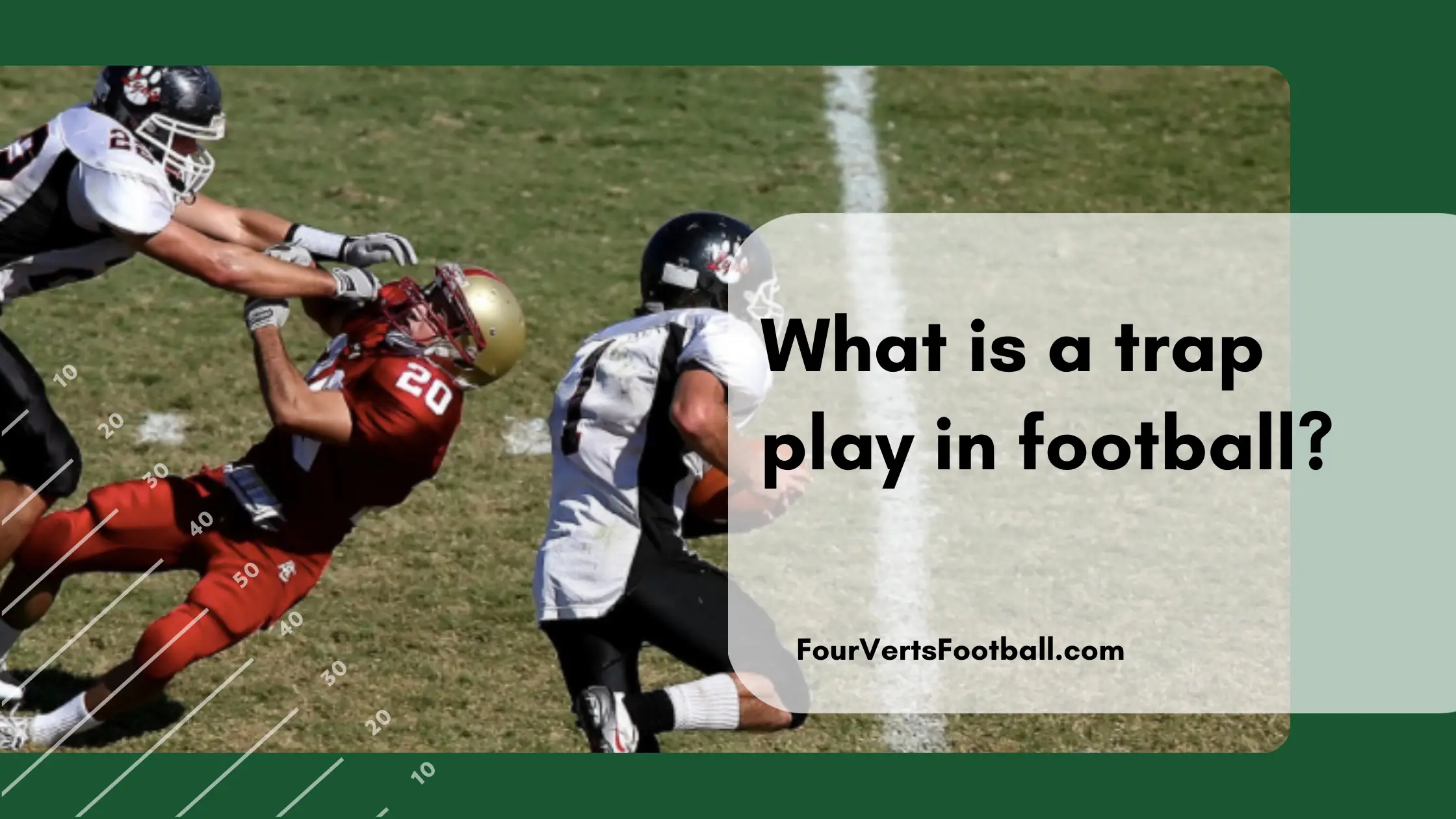A trap play in football occurs when a defensive lineman is intentionally unblocked by the offensive lineman in front of him and then is ultimately blocked by a pulling lineman coming from the other side of the line.
In short, one o-lineman will not block his man and move downfield while one of the other o-lineman comes across the line to pick up the unblocked player. The defensive lineman on this play often does not see the hit coming.
Benefits Of A Trap Play
Surprise Block On Defensive Lineman
The biggest benefit of a trap play is that the key defensive lineman on the play is not going to see his block coming.
When a defensive lineman gets past the offensive lineman in front of him he will often believe he has a shot at the quarterback. These linemen are not going to expect a blocker to come from the other side of the line.
Catching the defensive lineman by surprise is going to make it much easier to block him. On a standard run play, a defensive lineman will read which way the o-lineman is attempting to block him and try and fight the opposite way.
This is because the D-lineman knows the offensive lineman is trying to push him away from where the ball is going. This makes it difficult to clear a hole for the running back as the defensive lineman will attempt to fight against the block.
On a trap play, this defensive lineman will have much more difficulty plugging this hole. This is because he will not be able to read the player blocking him. As the defensive lineman goes unblocked he will be looking for the ball as the pulling offensive lineman hits him with a surprise block.
Offensive Lineman Downfield
One of the most important aspects of a trap play is that it allows an offensive guard or tackle to move downfield.
As the play starts either a guard or tackle will move past the man in front of him without attempting to block. The reason for this is that it allows this offensive lineman to move freely down the field.
Once past the defensive lineman, this blocker can now make contact with a linebacker. This gives the running back a hole in the defensive line as well as at the next level.
Offensive linemen are much bigger than linebackers and if good contact is made they should be able to eliminate them from the play. It is common that linemen downfield to perform pancake blocks on unsuspecting players.
This block on the linebacker can be key to creating a big play. If the running back is able to reach the second level there is a chance that a long touchdown will be scored.
Disadvantages
Potential Tackle For Loss
The only negative aspect of a trap play is that the unblocked defensive lineman presents a potential tackle for loss. On a trap play one defensive lineman is going to be allowed into the backfield.
This lineman is then subsequently blocked by a pulling guard or tackle. But if the lineman were to go directly to the ball carrier a tackle can be made behind the line of scrimmage.
When this lineman is unblocked they are often confused as to where to go. This will usually give the pulling guard enough time to perform a big block.
But if this unblocked defender identifies the play and goes straight for the running back this play can result in a loss.
Why Is It Called a Trap Play?
The reason this is called a trap play is that the defensive lineman believes he has found himself unblocked in the offensive backfield. The goal of any defensive lineman is to get into the opposing team’s backfield.
In this play, the defensive lineman will believe that he has achieved his goal. Little does this player know that this invitation into the backfield was a trap.
This intention of tricking the defensive lineman is why the play is referred to as a trap play.
That’s all on trap plays in football read on about quarterback sneaks or dive rushes if you enjoyed this play breakdown.

